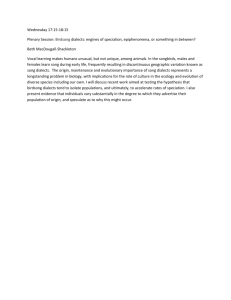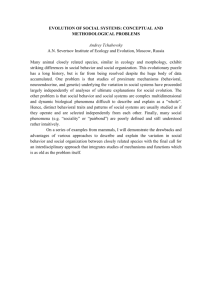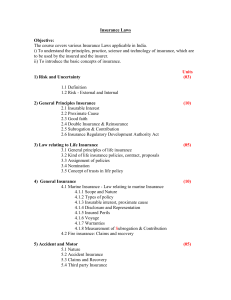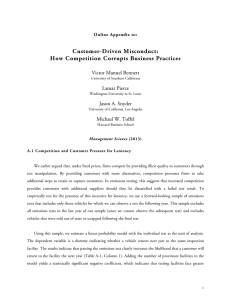STUDY QUESTIONS Zoology 304-2001 Dr. Bowen
advertisement
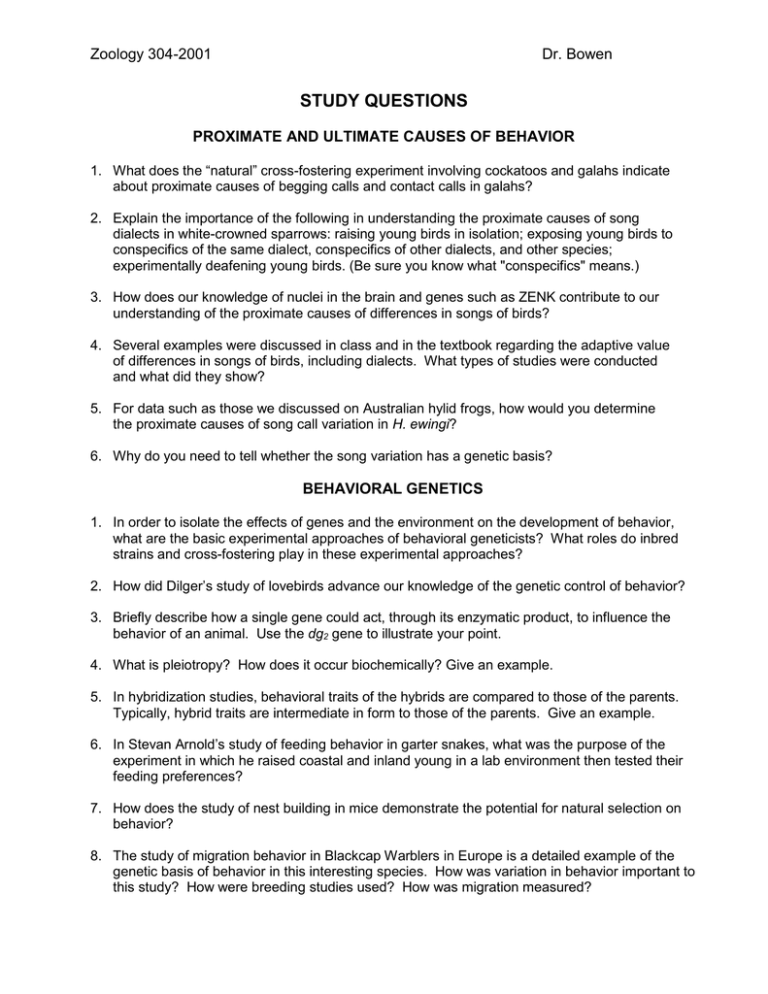
Zoology 304-2001 Dr. Bowen STUDY QUESTIONS PROXIMATE AND ULTIMATE CAUSES OF BEHAVIOR 1. What does the “natural” cross-fostering experiment involving cockatoos and galahs indicate about proximate causes of begging calls and contact calls in galahs? 2. Explain the importance of the following in understanding the proximate causes of song dialects in white-crowned sparrows: raising young birds in isolation; exposing young birds to conspecifics of the same dialect, conspecifics of other dialects, and other species; experimentally deafening young birds. (Be sure you know what "conspecifics" means.) 3. How does our knowledge of nuclei in the brain and genes such as ZENK contribute to our understanding of the proximate causes of differences in songs of birds? 4. Several examples were discussed in class and in the textbook regarding the adaptive value of differences in songs of birds, including dialects. What types of studies were conducted and what did they show? 5. For data such as those we discussed on Australian hylid frogs, how would you determine the proximate causes of song call variation in H. ewingi? 6. Why do you need to tell whether the song variation has a genetic basis? BEHAVIORAL GENETICS 1. In order to isolate the effects of genes and the environment on the development of behavior, what are the basic experimental approaches of behavioral geneticists? What roles do inbred strains and cross-fostering play in these experimental approaches? 2. How did Dilger’s study of lovebirds advance our knowledge of the genetic control of behavior? 3. Briefly describe how a single gene could act, through its enzymatic product, to influence the behavior of an animal. Use the dg2 gene to illustrate your point. 4. What is pleiotropy? How does it occur biochemically? Give an example. 5. In hybridization studies, behavioral traits of the hybrids are compared to those of the parents. Typically, hybrid traits are intermediate in form to those of the parents. Give an example. 6. In Stevan Arnold’s study of feeding behavior in garter snakes, what was the purpose of the experiment in which he raised coastal and inland young in a lab environment then tested their feeding preferences? 7. How does the study of nest building in mice demonstrate the potential for natural selection on behavior? 8. The study of migration behavior in Blackcap Warblers in Europe is a detailed example of the genetic basis of behavior in this interesting species. How was variation in behavior important to this study? How were breeding studies used? How was migration measured?

